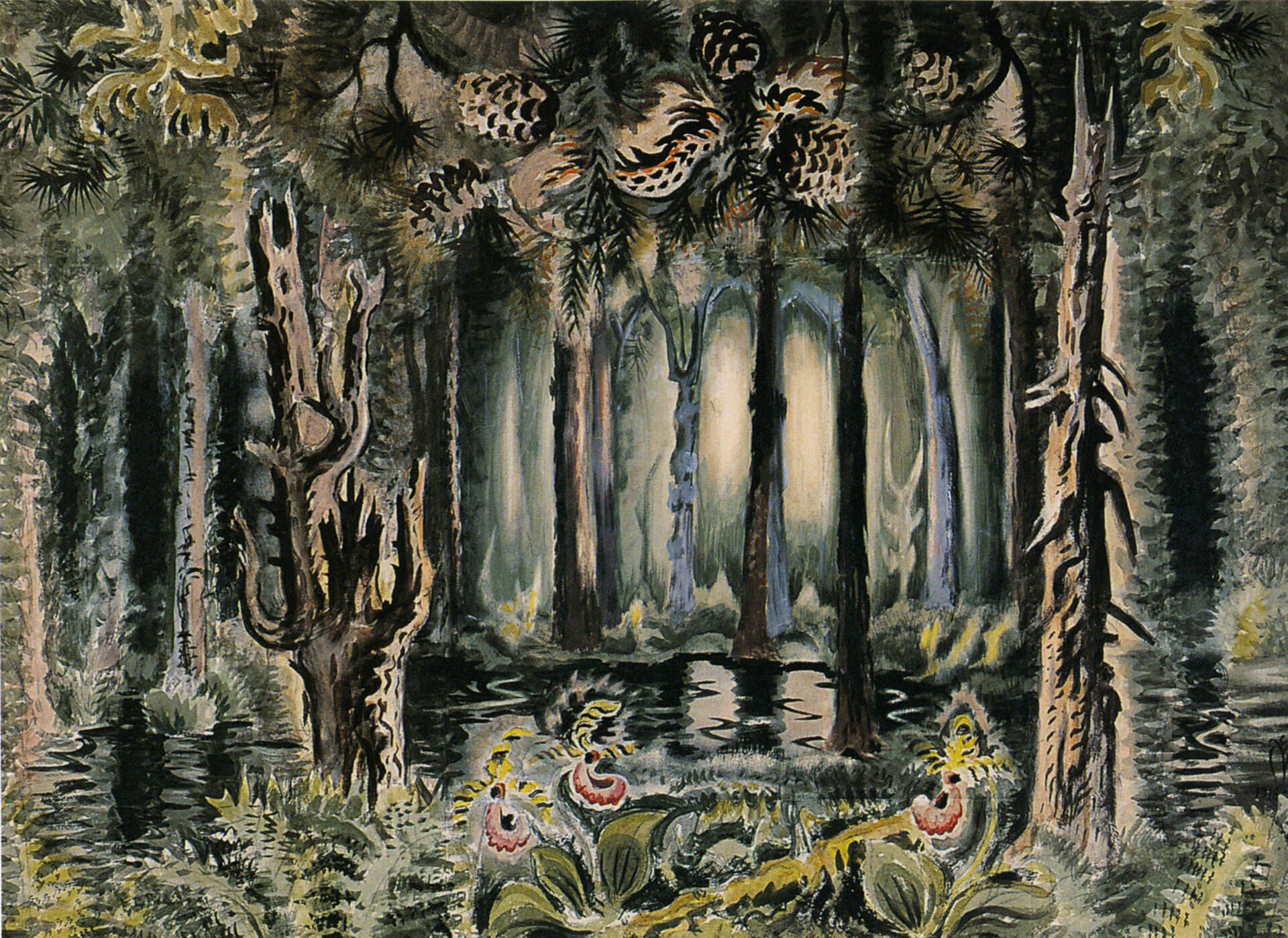
Charles E. Burchfield (1893-1967), In the Deep Woods, 1918-56; watercolor on joined paper, 33 x 45 inches; Private Collection
Charles E. Burchfield, Journals, June 13, 1936
Tuesday, Jun 24, 2014
P.M. With W.W. to a bog he had told me about to find pitcher-plants. A rarely beautiful place, a new experience for me. The thick heavy moss was like springs under the feet. Once a pond but now a wide expanse of moss it still has the character of a pond; enclosed by dark evergreens & dense woods, which were swampy, but without the moss. The pitcher-plants were growing in great profusion, but not so many in bloom. A pair of swamp hawks, overanxious unwittingly point us to their nest, in which we find six young hawks, sprawling helplessly, but glaring ferociously at us with a beak half open.
W. is the complete naturalist. Peering here & there in the most unlikely places, he found all sorts of beetles & moths which escaped my eye. I once had it, but it is gone from me completely. He found a pair, male & female of rare butterflies, which delighted him greatly.
New flowers to me that we found; snake-mouth; American cranberry, with a small flower like the shooting star, and clintonia, the latter very graceful & beautiful.
The bog seemed like an enchanted place, the hot sun shining from a still blue sky only emphasizing this feeling.
W. identified for me the call of the Veery or Wilson thrush, which I had first heard and been puzzled by last year at Niagara Falls. He described it as like blowing into an iron-pipe, which is extremely apt. It will belong forever to rank green glades in June, hot garish sunlight, flowing raspberry, and the smell of citronella.
Charles E. Burchfield, June 13, 1936